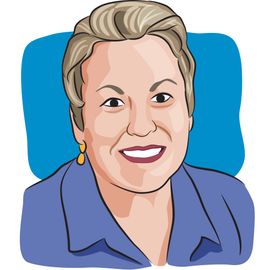- About Us
- Advertise / Support
- Editorial Board
- Contact Us
- CancerNetwork.com
- TargetedOnc.com
- OncLive.com
- OncNursingNews.com
- Terms & Conditions
- Privacy
- Do Not Sell My Information
- Washington My Health My Data
© 2025 MJH Life Sciences™ and CURE - Oncology & Cancer News for Patients & Caregivers. All rights reserved.
Adjusting to Life After Cancer: Physically & Emotionally

Kathy LaTour is a breast cancer survivor, author of The Breast Cancer Companion and co-founder of CURE magazine. While cancer did not take her life, she has given it willingly to educate, empower and enlighten the newly diagnosed and those who care for them.
Cancer survivors end treatment and begin the dual journey that combines physical and psychological elements as they try to find the “new normal” of life after cancer. Physical challenges, depending on treatment, may range from long-term disabilities related to physical losses or more intangible issues, such as chronic pain, fatigue, nausea, eating complications, anemia, memory loss, lymphedema, cardiopulmonary symptoms and nerve damage.
Cancer survivors end treatment and begin the dual journey that combines physical and psychological elements as they try to find the “new normal” of life after cancer. Physical challenges, depending on treatment, may range from long-term disabilities related to physical losses or more intangible issues, such as chronic pain, fatigue, nausea, eating complications, anemia, memory loss, lymphedema, cardiopulmonary symptoms and nerve damage.
Each patient moves at his or her own pace through the individual labyrinth of physical and emotional challenges that their cancer diagnosis presents. These challenges are further complicated by issues of family support, employment and life-style changes that may be necessary to accommodate short-term or long-term changes.
Physical and emotional healing tag-team each other. Focusing on them at the same time helps.
Cancer rehabilitation specialist Julie Silver, MD, an assistant professor at Harvard Medical School, says the goal for patients should be to find the best physical solutions, which go hand-in-hand with emotional healing, before accepting the new normal. Silver, who is also a breast cancer survivor, says her mission is to advance survivorship care with a program called STAR (Survivorship Training and Rehabilitation), which is a certification to help oncology and rehabilitation professionals better understand cancer rehabilitation and how to work together to improve the physical recovery of cancer survivors. Silver points to the growing awareness for the need for rehabilitation as a critical part of the healing experience for survivors, an obvious fact for rehabilitation professionals, she says, but still not accepted at many cancer centers.
“Cancer survivors—and their oncologists—have too long accepted physical changes and limitations as part of cancer’s outcome,” Silver says. “Physical and emotional healing tag- team each other. When you are emotionally at a low ebb, you’ll also be physically low. Focusing on them at the same time helps.”
For example, Silver says it’s generally accepted among cancer survivors and doctors that fatigue is something survivors will have to live with.
“Someone who has been through cancer may not be sleeping that well due to stress or other concerns. They are also not exercising, both of which have a profound effect on fatigue, but physicians will call it cancer-related fatigue. It’s not the same, and it may well be that the fatigue has to do with poor sleep and physical conditioning.”
She recommends that patients approach their doctors with specific physical symptoms and ask what can be done for them before accepting they can’t be changed. But no matter the physical issue, Silver says to heal as well as you can be before accepting your new normal.
For more on cancer rehabilitation, read Julie Silver's blog "Getting well: Cancer rehab."
Related Content:



